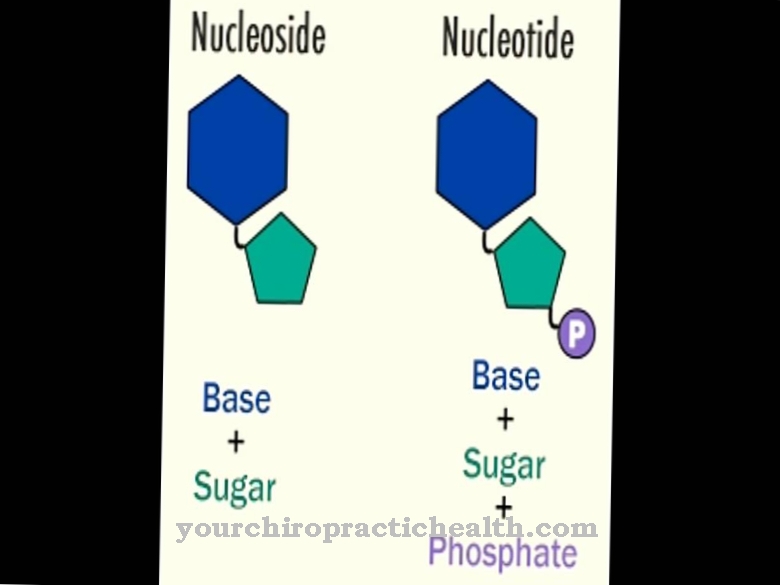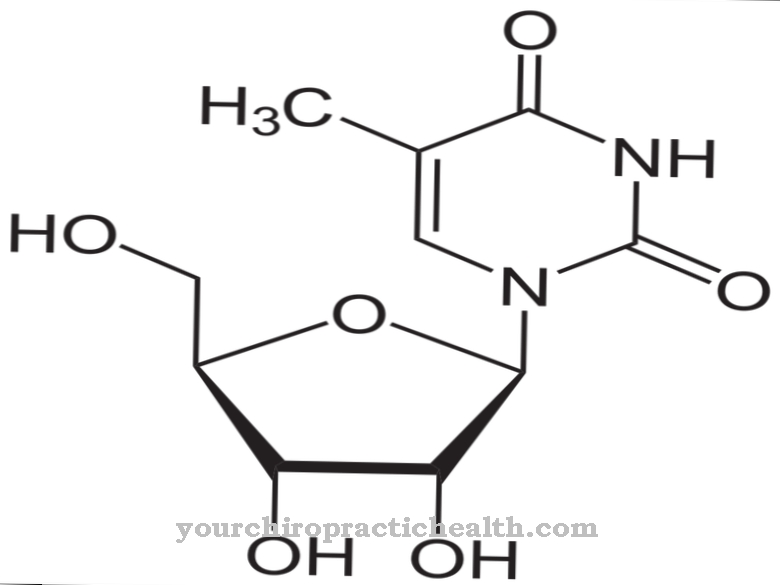Dynein is a motor protein that primarily ensures the mobility of the cilia and flagella. This makes it an important, inner-cellular component of the ciliated epithelium, male sperm, the eustachian tube and the bronchi or the uterine tube. A mutation of different genes can impair the function of the dynein.
What is dynein?
Together with myosin, kinesin and prestin, the cytoskeletal protein dynein forms the group of motor proteins. The allosteric motor proteins are responsible for transporting loads such as cell organelles or vesicles inside cells.
They are among the intracellular proteins and, thanks to their motor domain, can bind to a protein network. Your tail domain has a binding site for the loads. Dynein usually forms dimers from two monomers. They bind to microtubules, i.e. tubular filaments made of proteins. The microtubules are usually transported from the cell membrane to the cell nucleus. Dynein has several subspecies. Some of them occur exclusively in the axonema of the cilia and flagella. Together with kinesin, dynein is part of the microtubule filaments of the cytoskeleton.
Flagella and motile cilia become movable and orientable components through Dynein. Various genes code for dynein on a biomolecular basis. The genes DNAL1, DNAI1, DNAH5 and DNAH11 are, for example, among the coding genes.
Function, effect & tasks
Like all motor proteins, Dynein is a transporter that transports vesicles and realizes other transport and movement processes. The head region of the molecule binds to microtubules. The tail part can interact with lipid membranes.
In the head area, dynein can bind and hydrolyze adenosine triphosphate (ATP) in two domains. In this way, the molecules supply themselves with the energy they need for transport processes. The hydrolysis corresponds to the splitting of chemical compounds through the addition of a water molecule. The dipole character of the H2O molecule causes the substances to split. Each dynein complex first binds a molecule to itself. Then it runs along a microtubule thanks to the energy previously obtained. Transport is directed transport. Dynein can only migrate on the microtubule towards the minus end.
Dyneins transport their charge from the periphery of the plasma membrane to the microtubule organizing center near the cell nucleus. This type of transport is also called retrograde transport. The motor protein kinesin is responsible for the opposite transport. Some viruses use the transport processes of motor proteins to get to the nucleus of cells, for example herpes simplex. Because dynein can bind to membrane lipids and microtubules at the same time, dynein connects inner-cellular vesicles to the cytoskeleton and performs ATP-dependent conformational changes on them by transporting the protein structure to the negative end of the filament.
Education, occurrence, properties & optimal values
Dynein occurs in the cilia of the plasma membrane. On each A-tubule, a cilia carries pairs of arm-like structures, also known as dynein arms, which are oriented towards the B-tubule of the neighboring doublet. In addition to conformational changes, Dynein mainly moves cilia and flagella. The cilia in particular have meanwhile been assigned vital tasks, as they ensure the function of many organs. The occurrence of dynein in the human organism is correspondingly frequent.
The motor protein is found in the epithelium of the uterine tuba, in the bronchi or in the sperm tail, for example. The ciliated epithelium of the lungs, the ear trumpet or the nasal mucosa of the paranasal sinuses are also dependent on Dynein. Ultimately, the molecule is a crucial component for all ciliate-bearing epithelia. The formation of the motor protein begins at the biomolecular level. Here different genes code for the cytoskeletal protein and maintain their functions during the embryonic phase.
Diseases & Disorders
Genetic defects in the coding genes for Dynein give rise to the syndrome of Kartagener syndrome. Specifically, mutations of DNAL1, DNAI1, DNAH5 and DNAH11 have so far been linked to the disease.
The function of the ciliary epithelia is disturbed by the mutation. Kartagener's syndrome is also called primary ciliary dyskinesia and can be inherited as an autosomal recessive trait. The dyskinesia of the cilia corresponds to an absence or loss of function of the dynein arms. As a result of this loss of function, the mobility of the cilia is limited or not available. In primary ciliary dyskinesia, the clinical picture affects all ciliary cells in the body. Neither the cells of the bronchial epithelium, nor those of the Eustachian tuba or the paranasal sinuses, work sufficiently. The directed ciliate stroke is already absent in the embryonic phase.
Around half of all those affected suffer from anomalies in the position of numerous internal organs. Usually there is a so-called situs inversus. Men suffer from sperm dysknesia which is associated with infertility. Women can also be affected by infertility because the cilia within the tuba uterina are immobile. Because of the impaired mucociliary clearance, obstructions or infections of the airways occur. Recurrent bronchitis, rhinitis, or sinusitis are common symptoms.
As the disease progresses, bronchiectasis often forms. The functionality of the cilia can be checked using a cilia function test. There is no causal therapy. At least symptoms such as retention of respiratory secretions can now be combated. Abundant fluid intake, the administration of a mucolytic and the inhalation of a β2-sympathomimetic are among the most important treatment options.


.jpg)
.jpg)


.jpg)

















.jpg)



